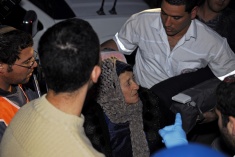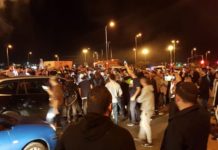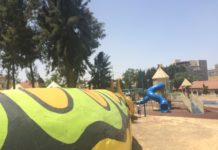Sderot and the Western Negev are the only places in the entire Western world which suffer from missile attacks that target civilians. In a few weeks, Israel will be celebrating its 60th independence day, and for the first time in the past 40 years, most of the country is under missile threat. The Hizbullah’s missiles from south Lebanon, and the “Hamastan”’s missiles from Gaza – the Qassam/Grad missiles which risk the lives of over half a million Israelis. In addition to that, there is a debate about whether Israel should or should not achieve a ceasefire.
However, can such a ceasefire really exist?
According to the Intelligence and Terrorism Information Center, the Hamas has the ability to fire missiles systematically and continuously toward Israel, and to successfully include Ashkelon in the fire range, which increased their strength. In addition, according to the IDF spokesperson, 355 missiles and mortar shells were fired towards Israel in six days, from Feb. 28-Mar. 4, of which 207 landed in Israel, and over a 100 of them in Sderot.
“Hamas is using the calm times in the Gaza Strip in order to continue arming itself, along with repairing the damages and correcting ‘weak points’ which were revealed in the past escalation round. The Hamas’s achievements as a terrorist organization in the past two-and-a-half years, after the disengagement plan, would’ve taken 20 years for any other terrorist militia in the world to achieve. “
However, there has been recent public debate as to whether or not we should talk, unify, and negotiate with Hamas — “give a chance” to a mutual ceasefire.
The question is: How many of us know that we already had a ceasfire?
Last year, Israel and Hamas declared a “ceasefire” between Nov. 26, 2006 and May 15, 2007. During that supposed period of calm, according to 315 Qassam missiles were fired toward Israel, with no response, according to the IDF spokesperson. Furthermore, on Feb. 2, 2007, three months after the beginning of the ceasefire and after over 160 missiles were fired towards Israel, Khaled Mashal and Abu Mazen established the Mecca agreement. When visiting in Moscow, Khaled Mashal promised to stop the firing of Qassam missiles, and after two days, seven missiles were fired toward Israel.
“The military wing of the Hamas offers to stop the firing of Qassam missiles, in exchange for the complete evacuation of Sderot,” Meashal said five days before the start of the ceasefire.
It’s appropriate and important to ask: Would any other Western democratic country in the world accept and allow a one-sided ceasefire? And what about accepting and allowing one Qassam missile to explode in its area?
“What does a wise person say?” – ‘the Qassam missile isn’t a threat to the existence? How many people have been killed by one? And how many soldiers do we need to sacrifice for a few ‘anxiety victims’?’”
No Israeli family should reach a situation in which they all sleep in the living room for almost eight years, because in the event of an attack in the middle of the night, they might not be able to reach their shelter on the first floor in the 15 seconds warning the Tzeva Adom alert gives them.
Why must we show people dead bodies to get them to understand the situation?
What about the hundreds of kindergarten children in Sderot, who are being treated with painkillers and psychiatric drugs for years? What kind of life will they have in the future, and what kind of life are they living now?
Ziva Dahan, a mother of 4, tells us about her children’s trauma: “We still don’t comprehend it, at least not yet, but don’t worry. Children that grow up in such a hallucinatory environment are able to comprehend. Their children are the ones who are truly going to suffer.”
There’s no excuse for missiles which are being fired towards a civilian population (97% of the targets, according to the air force commander), and in order to kill as many civilians as possible.
Danny Dahan, Ziva’s brother, a grocery shop manager and a private spokesman of the small enterprises in Sderot, says that “When we’ll realize the problem, 50% of it would be solved.”
While we teach our children in Sderot to run to a protected shelter in 15 seconds, the Palestinians teach their children to climb the roofs and become human shields — because it looks good on the international news, and “justifies” the firing of missiles towards Israel.
The terrorism should be wiped out, for both our children and theirs.
“You don’t need to be wise, you need to be right…, simple person”.
Nowadays, Sderot became a symbol against its will. In 20 years, we will look back and examine if we, the Israeli public, succeeded in supporting Sderot and in showing both national Jewish and Israeli unity, connecting the city to the center of the country. If we succeed, Israel and its people will have hope for 60 more years…











